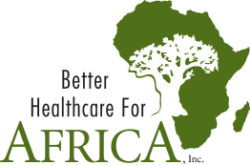COVID-19 is the name of a disease that is now a global pandemic.SARS-SARS-CoV-2 (severe acute respiratory syndrome coronavirus 2) is the official name of the virus that causes the disease.
The virus originated in the city of Wuhan, China, in November 2019. A seafood market in that city of 11 million is thought to be the site of origin. Evidence indicates that humans acquired the virus from an infected wild animal.
Analysis of SARS-CoV-2 genetic material suggests that bats might be the source of the virus before it jumped to humans.
How we spread SARS-CoV-2
Unlike most animal viruses, SARS-CoV-2 has the capability of being transmitted from one human to another.
Infected humans transmit the virus to others when they cough or sneeze and release tiny droplets into the air. These droplets can remain in the air for several hours and be inhaled by others. They can also settle on surfaces and remain infectious for several days. For this is why measures such as frequent hand washing, physical (social) distancing and ≈coughing and sneezing into a tissue or your bent elbow are so important. They can slow the spread of the virus.
How the virus enters the body
A person can become infected with the virus by inhaling the contaminated droplets released when an infected person coughs or sneezes into the air.
Infection can also happen when the virus is present on a person’s hands, and they touch the nose or mouth.
The virus can also enter the body by infecting the eye. This is why everyone should avoid touching the eyes. It is also why it is important for healthcare workers to wear eye protection.
Once inside the body
Once inside the body, the SARS-CoV-2 virus eventually moves into the lungs, leading to a pneumonia. It can cause severe lung damage and death in some people. An infected person can spread the virus even before they know they have the disease; that is, before they have symptoms. Symptoms include a fever of more than 38.5 degrees C., a dry cough and shortness of breath.
This is why physical distancing (also called social distancing) is so important in countries where COVID-19 is present. Physical distancing calls for a person to remain two meters (6 feet) from other people.
Research to stop and treat the virus
Vaccination is the most effective way to prevent infectious diseases. Unfortunately, there is no approved vaccine against the SARS-CoV-2 virus yet. However, a candidate vaccine is now in the first phase of clinical trials testing. If this vaccine, or others like it that are in development, prove safe and effective, it will be a breakthrough for the control of the COVID-19 disease.
At the same time, many researchers are studying a number of drugs for their ability to control the effects of the virus once it is in the body. There has much talk and media coverage about the anti-malarial drug called chloroquine.
There is no proof yet that this drug is a safe and effective antiviral treatment for COVID-19 patients, but clinical trials are in progress and scientists are hopeful.
Source of this information: Shan-Lu Lou, MD, PhD, co-director of the Viruses and Emerging Pathogens Program of The Infectious Diseases Institute at The Ohio State University, The Columbus Dispatch 26/03/2020
